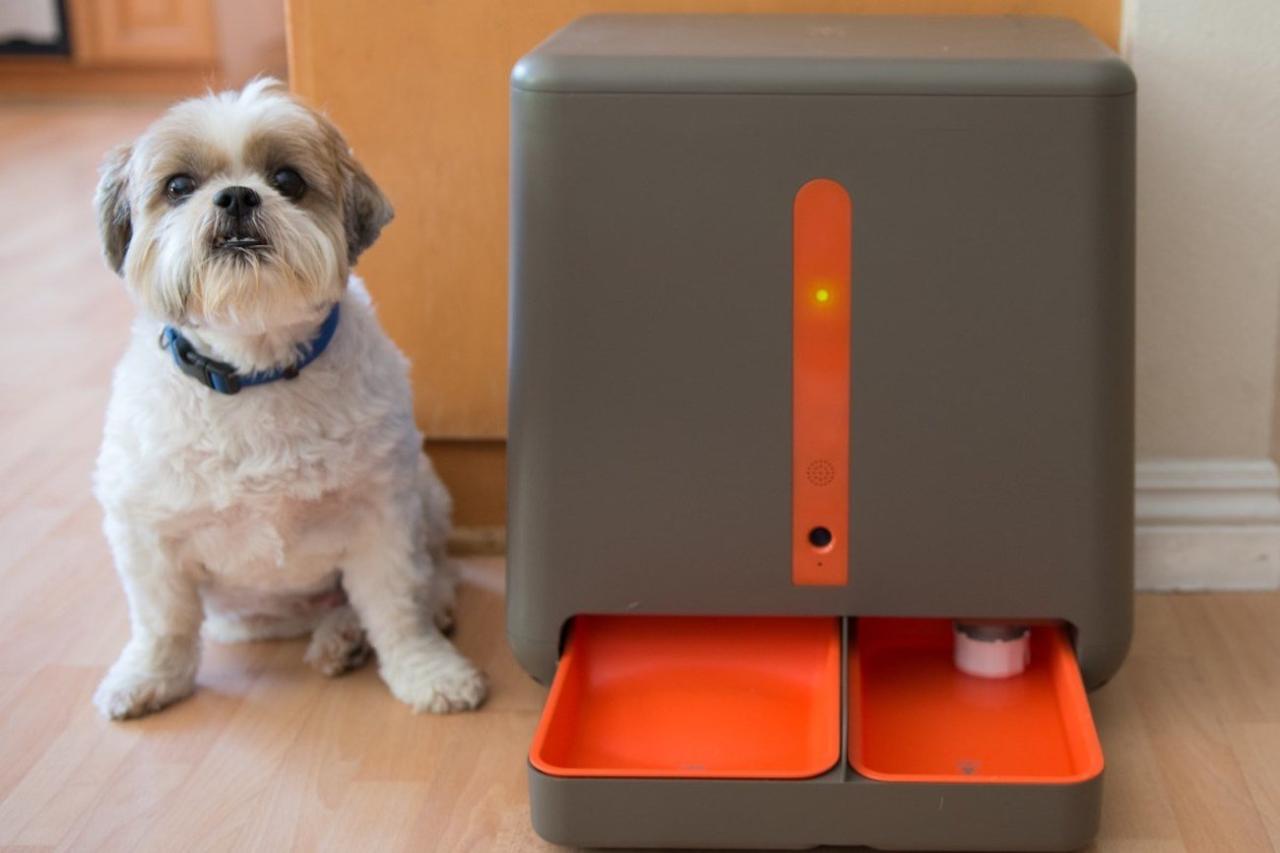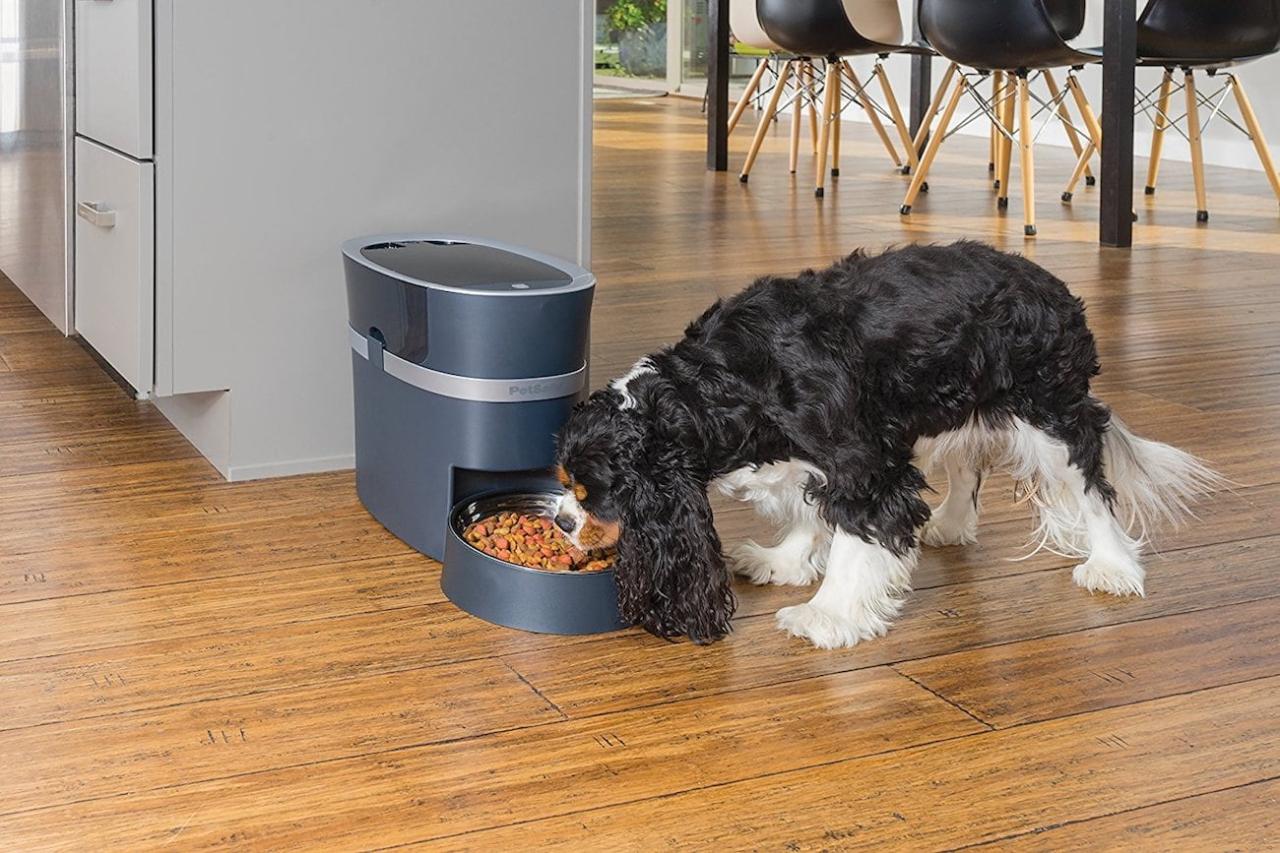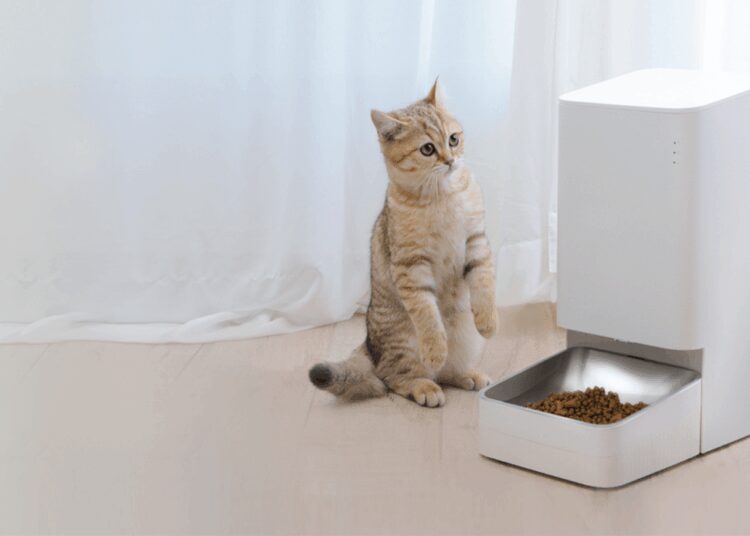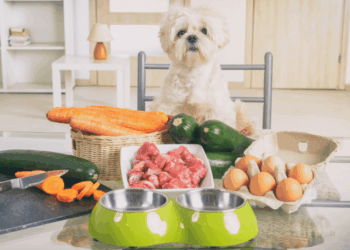In the modern world, where schedules are packed and travel is frequent, ensuring your beloved pet is fed on time can be a constant source of stress. The simple act of providing a meal, a fundamental aspect of responsible pet ownership, is often a challenge for busy professionals, frequent travelers, and even families with hectic daily routines. This is where the smart pet feeder emerges not just as a gadget, but as a revolutionary solution that bridges the gap between a pet’s needs and an owner’s schedule. It’s a device that brings technology, convenience, and peace of mind into the home, ensuring your furry friend never misses a meal.
Beyond mere convenience, these advanced devices are powerful tools for managing your pet’s health, wellness, and behavior. This comprehensive guide will delve deep into the world of high-tech pet feeding, exploring the benefits, the essential features, and providing a detailed review of the top models on the market today. By the end, you will have a clear understanding of why a smart feeder might be one of the best investments you make for your pet’s long-term health and your own peace of mind.
Why Smart Feeders Are a Game-Changer

The traditional pet bowl, while a timeless classic, comes with significant limitations in our fast-paced lives. Smart pet feeders, on the other hand, offer a host of advantages that address these modern challenges head-on. They are not merely an alternative; they are a superior, more responsible way to manage your pet’s nutrition.
- A. Unmatched Convenience and Peace of Mind: The most immediate and tangible benefit of a smart feeder is the unparalleled convenience it provides. Imagine being stuck in a late meeting, a long commute, or on a weekend getaway, and you receive a notification on your smartphone confirming that your pet has been fed. This eliminates the frantic rush to get home and removes the guilt of a late meal. For pet owners who work unpredictable hours or travel frequently, a smart feeder is an essential tool that ensures a pet’s routine remains consistent, regardless of their own schedule.
- B. Combating the Pet Obesity Epidemic: Pet obesity is a serious and growing health crisis, leading to a host of medical issues from joint problems to diabetes and a shortened lifespan. One of the primary culprits is inconsistent or uncontrolled feeding, often done by a human who may not be precisely measuring portions. Smart feeders are a powerful weapon in this fight. They allow for precise, automated portion control, dispensing a pre-set amount of food at scheduled intervals. This scientific approach to feeding helps maintain a healthy weight, which is the cornerstone of a pet’s long-term wellness.
- C. Fostering Routine and Reducing Anxiety: Just like humans, pets thrive on routine. A consistent feeding schedule helps to reduce a pet’s anxiety, as they learn to anticipate when their next meal will arrive. This predictability can curb begging behaviors and lessen the stress of waiting for their human to return home. For dogs and cats, the act of eating is deeply linked to their internal clock, and a smart feeder helps to regulate that clock, leading to a calmer and more content animal.
- D. Valuable Data and Health Insights: The most advanced smart feeders are not just dispensers; they are data-gathering devices. They can track and log every meal, allowing you to monitor your pet’s eating habits over time. This data is invaluable for identifying changes in appetite, which can be an early indicator of a health issue. You can share this detailed log with your veterinarian, providing them with critical information that might be difficult to track manually.
Key Features to Look For
Not all smart feeders are created equal. The market is saturated with options, from basic models to high-tech, feature-rich devices. To choose the right one for your pet, it’s crucial to understand the technology and the features that truly matter.
- A. Connectivity and Control: The core of a smart feeder is its ability to connect to your network. Wi-Fi-enabled feeders are the most popular, as they allow you to control and monitor the device from anywhere in the world using a mobile app. This is ideal for pet owners who travel or are away from home for long periods. Bluetooth-only feeders, on the other hand, require you to be within a certain range to operate them, making them less versatile but often more affordable.
- B. Scheduling and Portion Control: This is the most important feature. Look for a feeder that offers:
- Customizable Schedules: The ability to set multiple feeding times per day, each with a different portion size. This is crucial for pets on specific dietary plans.
- Precise Portioning: The best feeders use a sophisticated mechanism to dispense an exact amount of food, often measured in cups or grams. This eliminates human error and ensures your pet is getting the right amount of food every time.
- Manual Feeding Option: A button on the device or in the app that allows you to dispense a meal instantly. This is perfect for an extra treat or a quick snack.
- C. Camera and Two-Way Audio: For the tech-savvy pet owner, a feeder with a built-in camera and audio is a game-changer.
- The Camera: A high-definition camera allows you to check on your pet in real-time. You can see them approach the feeder, watch them eat, and confirm that the food has been dispensed.
- Two-Way Audio: The ability to talk to your pet through the app can provide immense comfort, both to you and to them. You can call them for dinner, reassure them when they’re anxious, or just say hello from afar.
- D. Power Source and Reliability: A reliable power source is non-negotiable. While most smart feeders plug into a wall outlet, a battery backup is a critical feature to prevent a missed meal during a power outage. This redundancy ensures that your pet’s schedule remains uninterrupted, no matter what happens.
- E. Design, Materials, and Durability: A smart feeder must be a fortress against a determined and hungry pet. Look for:
- Anti-Clog Mechanisms: A well-designed dispenser will prevent kibble from getting jammed, ensuring a smooth and consistent flow of food.
- Pet-Proof Design: The lid should be secure, and the materials should be durable enough to withstand chewing, scratching, and toppling over.
- Hygiene: Removable, dishwasher-safe components are essential for easy cleaning and to prevent the buildup of bacteria. Stainless steel bowls are often preferred over plastic for their hygiene benefits.
- F. App Functionality: The mobile app is your control center. A great app should be intuitive and offer features like feeding history logs, low food notifications, and even video storage if it has a camera.
Top Contenders
The smart pet feeder market is competitive, with new models and features being introduced every year. Here is a breakdown of the best smart feeders available, categorized by their primary strengths.
- A. The High-End All-Stars: For the Tech-Savvy Owner.
- Brand A (example): This feeder is a masterclass in technology and design. It features a stunning 1080p HD camera with a wide-angle lens, allowing you to see your entire living room. The two-way audio is crisp and clear, providing a genuine sense of connection. The app is intuitive and allows for precise scheduling, and the feeder can even send you a video of your pet eating. Its main drawback is the price, but for pet owners who want the absolute best and prioritize seeing their pet throughout the day, this model is unmatched.
- B. The Reliable and Affordable: Best Value for Money.
- Brand B (example): This feeder is a testament to the idea that you don’t need to break the bank for reliable technology. It forgoes the camera and audio features in favor of delivering flawless core functionality. Its scheduling is precise, its portioning is accurate, and it boasts a robust anti-clog mechanism. It’s perfect for the pet owner who primarily wants to ensure their pet is fed on a consistent schedule without any of the frills. Its simple, durable design makes it a reliable workhorse.
- C. The Cat-Specific Innovator: Solving Unique Problems.
- Brand C (example): This is a niche product that solves a very specific problem in multi-pet households. It is a microchip-activated feeder. It works by only opening for the designated pet whose microchip or RFID tag it recognizes. This brilliant technology prevents one pet from stealing another’s food, which is a common issue, especially with prescription diets. While it may not have all the high-tech features, its ability to solve this problem makes it an indispensable tool for many cat owners.
- D. The Dry and Wet Food Hybrid: The Versatile Choice.
- Brand D (example): Most smart feeders are designed exclusively for dry kibble, but this brand has found a way to handle both dry and wet food. Its design includes a removable tray with an ice pack compartment to keep wet food fresh. While its wet food capacity is limited and it requires more frequent cleaning, it’s a great option for pet owners who want the benefits of a smart feeder without having to give up wet food.
A Smooth Transition Guide

Transitioning your pet from a traditional bowl to a smart feeder requires patience and a gentle approach. A gradual introduction will prevent your pet from developing an aversion to the new device and will ensure a seamless shift in their routine.
- A. The Initial Introduction: For the first few days, set up the smart feeder next to your pet’s current food bowl. Do not use it yet. This allows your pet to get used to its presence and its scent without feeling threatened.
- B. Manual Feeding: Once your pet seems comfortable with the feeder, start to manually dispense a small amount of their regular food from the new device. This helps them associate the feeder with positive things (food!). Let them eat from the feeder, even if their main meal is still in their old bowl.
- C. Scheduled Introduction: Now, begin a low-level scheduled feeding. Dispense a very small portion from the smart feeder at its scheduled time while still providing the rest of their meal in their old bowl. This gets them used to the sounds and timing of the new device.
- D. The Full Transition: Over the course of a week or two, gradually increase the amount of food dispensed by the smart feeder while decreasing the amount in the old bowl. Eventually, your pet will be fully transitioned and will eagerly await their meal from the smart feeder.
Conclusion
The smart pet feeder is far more than a luxury item; it is a profound tool for responsible and compassionate pet ownership. By entrusting a smart feeder with the task of portion control and scheduling, you are taking a proactive step toward combating the pet obesity epidemic and ensuring your furry companion lives a longer, healthier life. You are also providing them with the stability of a consistent routine, which can significantly reduce their anxiety and improve their overall well-being.
The future of pet care is undoubtedly linked to technology. We are on the cusp of a new era where smart feeders will not only dispense food but will also analyze a pet’s eating speed, identify changes in appetite, and even integrate with a pet’s activity tracker to create a truly personalized and data-driven nutrition plan. The data gathered from these devices will empower veterinarians to make more informed decisions and will help pet owners to be more attuned to their pet’s health.
Ultimately, a smart pet feeder is an investment in your peace of mind and your pet’s happiness. It is a symbol of a modern pet owner’s commitment to providing the best possible care, even when they can’t be there in person. By choosing the right feeder, you are not just buying a product; you are adopting a smarter, more reliable way to care for the four-legged member of your family.













